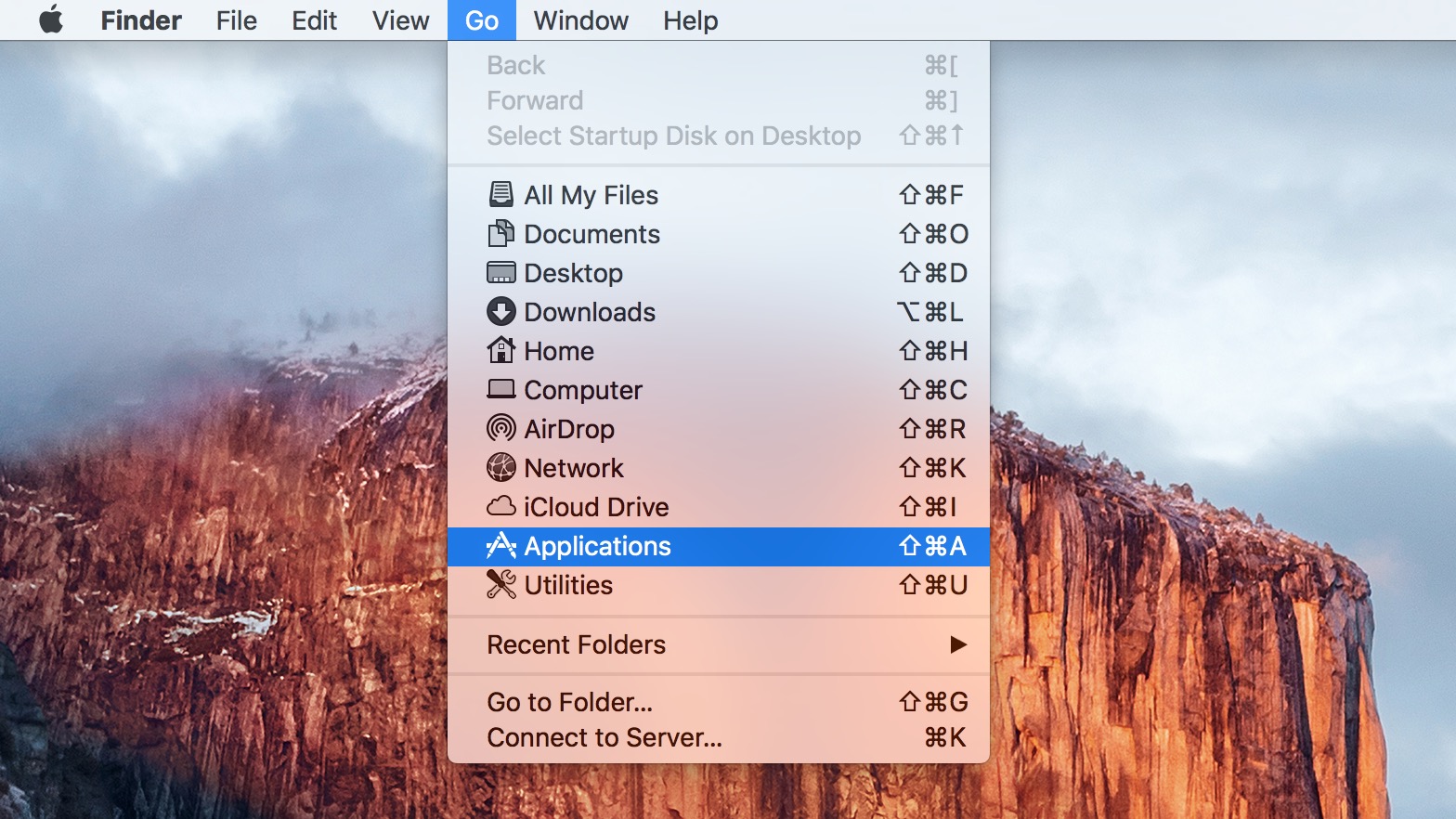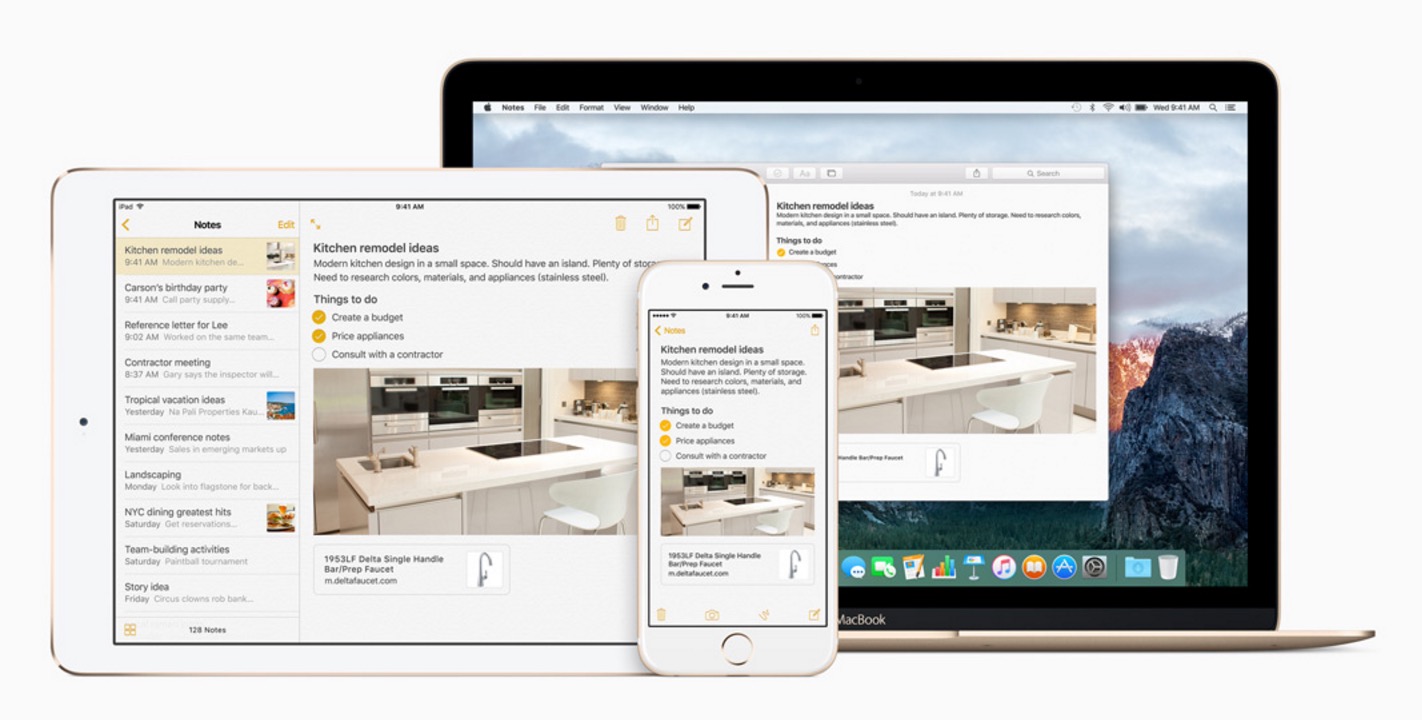With the launch of OS X 10.7 Lion and the new MacBook Air, you may have just bought your first Mac or upgraded the OS and would like to dig deeper to learn to use it more productively. We plan to help you with some tips and help for the new Lion features and other tools in OSX.
Here are five tips to help you work in OS X like a pro, including two new Lion features AirDrop and Smart Magnify in Preview. We saved the new stuff for last so let’s get started with three features that have been a part of OSX for a while.
1. Launch Apps with Spotlight
Even if you put a lot of apps in your OS X Dock, you still have a lot more installed than will fit at the bottom of even the largest screen. You can always click on the Applications folder and scroll or swipe up or down to find your app. If you know the name, a faster way is to use spotlight to launch the app.
Most people think of Spotlight as a way to search their system. It is also a fast way to start a program. Click on the Spotlight icon in the upper right. It looks like a magnifying glass. Start typing the name of the application and a list will drop down. Click on the app name and it will launch.
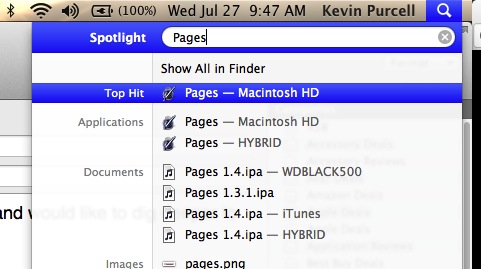
As a bonus, don’t bother with the mouse or trackpad. Just engage Spotlight with the keyboard using COMMAND + Space. Type the first few letters of the app name. If it is not the first one on the list use your arrow keys to highlight it and hit enter.
2. Open Applications Folder with Keyboard
You can also launch applications by using the keyboard shortcut COMMAND + SHIFT + A when you are viewing your desktop. This will open the Applications folder in Finder. Now use the arrows to find the file and hit Enter to open it. If the application is nested in a folder inside the Applications folder the Enter key will open that folder. Then use it again to open the application.
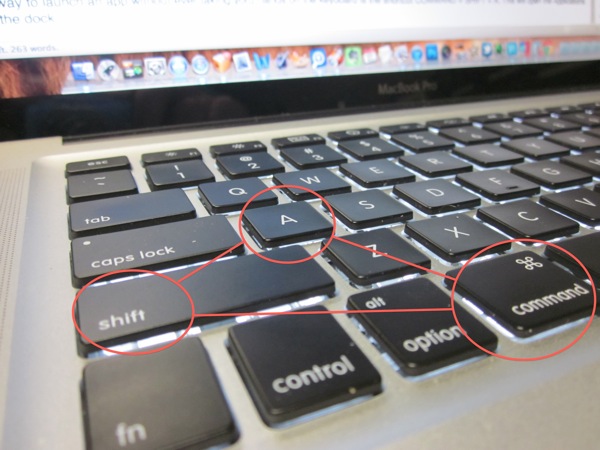
This keyboard shortcut might not work when an application is open. For example, I use Mars Edit to create blog posts and this keyboard shortcut does something else in that app.
3. Setup Smart Folders to Quickly Access Certain Files
Create a Smart Folder if you want to quickly access all the files of one kind, like all PDF files on my system. Use following steps:
- Open a new Finder window and click File, then New Smart Folder or use the keyboard shortcut COMMAND + OPTION + N.
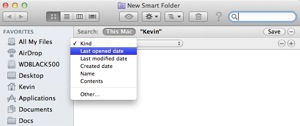 Enter the search terms in the search field at the upper right corner of the window if needed. You could search for all files with the word “project” in the file name. In our example for all PDF files, leave it blank.
Enter the search terms in the search field at the upper right corner of the window if needed. You could search for all files with the word “project” in the file name. In our example for all PDF files, leave it blank.- Narrow the scope by using the tiny plus sign in the upper right just below the search box.
- Use the drop down boxes left of the box for changing the file types with options like kind of file, searching by date, name or contents. Click Other to define other attributes. There are dozens.
- Narrow the search terms: depending on what attribute you select in the previous step, there will be another dropdown box. In our example of PDF files, we chose Kind so the dropdown box has file formats listed, and we can select PDF from the menu. You can choose things like JPG files, Music files or others.
- Click Save in the upper right below the search box.
- Give the folder a name and it will by default save itself in the Saved Searches folder and be added to the sidebar.
- Uncheck or check Add to Sidebar depending on your preference.
As you can see below, we now have a new item in our Favorites list in Finder called PDF Files and it contains every PDF file on the computer.
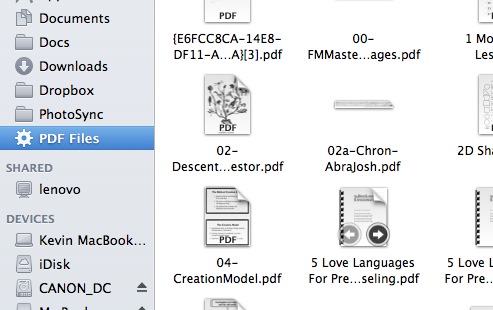
You could use smart folders make a folder of all the JPG files, MP3 or other Music files, or all the files created in a date range. You can include broad categories of files such as the above examples, or as narrow as photos with specific photographic attributes like: aperture, or shutter speed. You could also save a list of music files with a specific length, which might be useful for finding the ringtones or quick voice memos.
4. Get Close Up with Smart Magnify in Lions’s Version of Preview
Speaking of working with PDFs or JPGs, Preview is a great way to quickly take a look at a file without opening slow apps like Photoshop, iPhoto or Acrobat. If you want to get in close on your photos because you want to see how blurry or sharp they are, or find out who that person is behind Uncle Joe in the family photo taken at your last reunion, use Smart Magnify. This is a new feature in OS X Lion.

After you have opened a file in Preview by double clicking it in Finder or by using the File, Open menu items in Preview, you can now use Smart Magnify. Start it up either by using the Tools menu and clicking Show Magnifier or use the Tilde key (upper left under the ESC key and left of the 1 key). This will zoom in only where your mouse cursor sits. You can move around the document or image by moving the cursor.
5. Share Files With the Lion’s New AirDrop
The new AirDrop folder in Finder offers a quick way to send files to another computer in your network. Below you will see that my MacBook Pro, represented by the icon at the bottom, and my MacBook Air, represented by the icon at the top, are the only two OS X machines on my network. It would be nice if either Microsoft or a third-party software maker created an AirDrop tool for Windows.
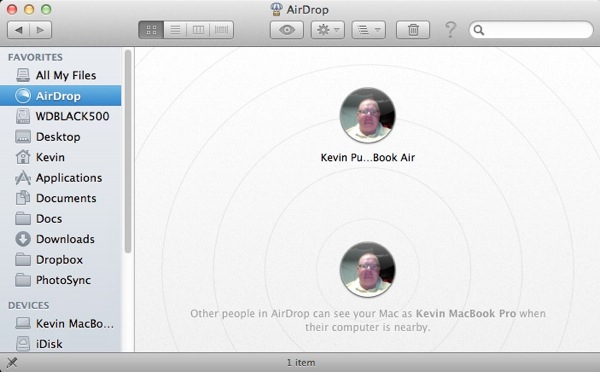
To quickly send a file to my Air I find the file in Finder and drag it and hold it over the AirDrop folder, which you see above in the left hand column of Favorites. This will open after I hold the file over the AirDrop folder with my mouse or trackpad. Then I can drag the file over the computer’s icon for my Air and the pop-up box in the image below appears.

The recipient will see a box like the one below and their Finder Dock icon will start to bounce notifying them of your intention to share a file. The person can click Save and Open, which will save the file to that machine’s drive and open the file in the default program related to that file format. For example, an image file will open in Preview if Preview is the default program for that kind of file. A Pages file will open in Pages and so forth. If the person clicks decline the sending machine will notify the sender. Click Save to keep the file without opening it.


